Woodland Classroom
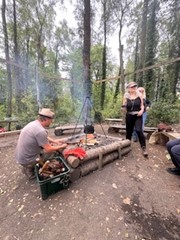
August 2025, Amanda Derry MA AiH
Wrexham University Arts in Health field trip. Venue: Northop Campus forest school, outlined in the website: Xplore!
With James Kendall from the Woodland Classroom, Wrexham:
‘Through our passion, enthusiasm and experience we help people connect with nature, feel healthier and have meaningful experiences through positive activity and creative play.’
-Woodland Classroom, 2023
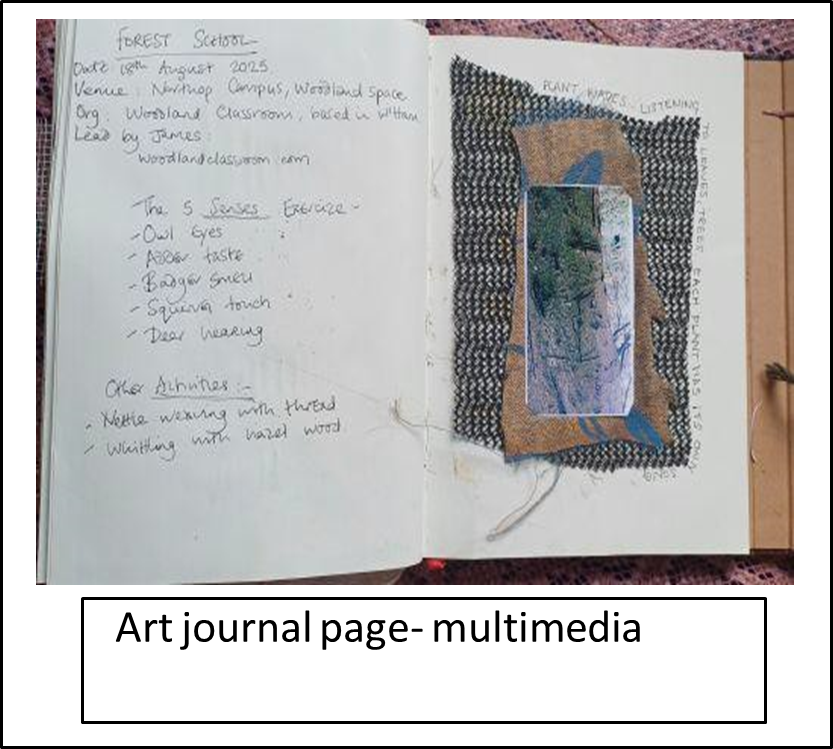
Art journal page- multimedia
For two hours we had a sample of forest education including:
- 5 Senses exercise
- Having tea around the campfire
- Listening to Plant Waves
- Making nettle rope
5 Senses (Mindfulness) exercise:
- Owl eyes – looking at our periphery
- Adder taste – blackberries, tea
- Badger smell – earth, fertilizer (compost loo) dry and fresh leaves, smoke (from the campfire)
- Squirrel touch – sticks, bark, leaves, tree
- Deer hearing – birds, wind
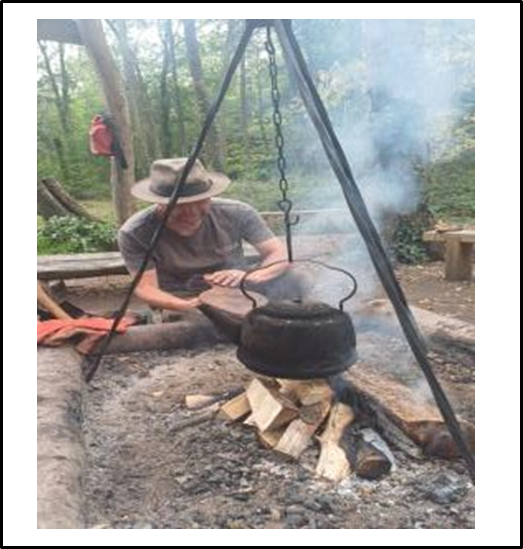
.png)
Envelope wallet:
I created an envelope-wallet to keep fabric pieces, photographs of the forest session, things I had collected. These could be used for an art journal or kept as a collection.
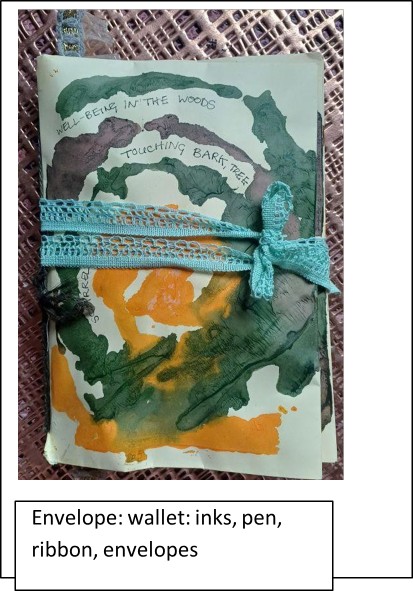
.png)
.png)
Making nettle rope:
Wearing protective gloves, pick a tall stick of nettles
Run your hand up and down the stem to take off the leaves and stings
Test the stem has no stings by tasting it with your tongue (if you dare!)
Squeeze the stalk flat until it splits (a mallet can be used gently) and run a thumb nail to lengthen the crack all the way to the end.
.png)
Break a piece of the pith off and pull it away, extracting the fibres
Peel the outer layer of the stem downwards, which should appear like threads (green thread is better than brown, when the nettles become dryer towards Autumn)
Twist the threads together until they buckle towards you and twist around Twist the rope, bringing it over and above towards you
The threads can also be plaited
Nettle thread can be used like cotton utilised in the process of making clothes and is more sustainable than cotton. However, there is not an automated process for
producing nettle thread which needs to be done by hand, so it is a long process.
For more information:
‘New spinning technologies, plant cross-breeding, and growing concerns over the environmental costs of conventional cotton-growing make nettle a viable alternative for eco-textile companies.
-Mari Stuart and Make Gather Grow, 2023
Listening to Plant Waves:
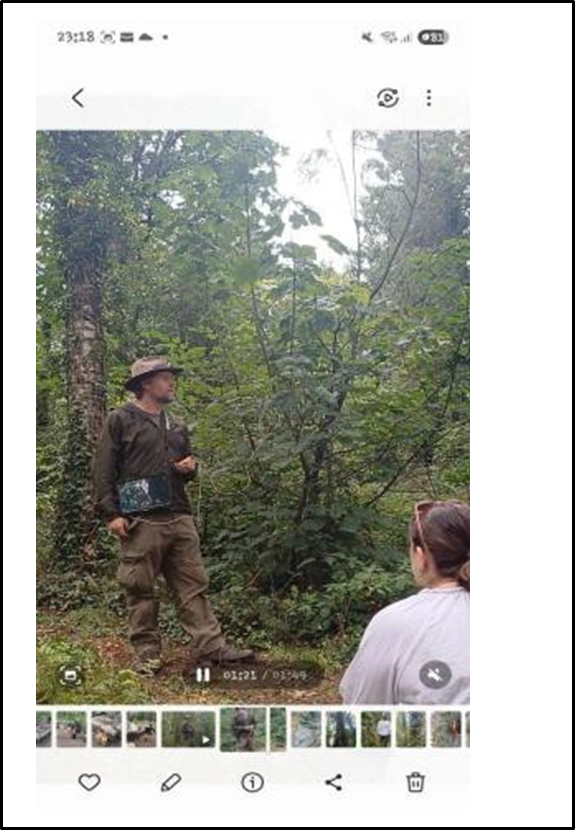
‘Plant Wave is a simple new device that allows you to ‘hear’ plants – and they are all different. At the same time you can also create a constant stream of relaxing music. It works on any type of living plant.’
-Think Tree , 2025
All plants will have a different sound. We listened to music created by a sycamore tree, which appeared as sound waves on a screen. Two electrodes were attached to two parts of the plant e.g. two leaves. These connected to a device that detected electrical variations, translated into a pitch which translated into music.
There are benefits in creating art and crafts in a natural environment, where materials are at hand with the added inspiration of natural surroundings. For example, Journey sticks are made from items collected on a nature walk which tell the story of the experience. Forest schools are traditionally for children, but forest education is an edifying experience for adults as well.
.png)
REFERENCES:
Outdoor Tribe (2025), Forest School Adults | Outdoor Tribe. Available from: https://www.outdoortribe.co.uk/forest-school-for-adults/. [Accessed 7th September, 2025.]
Stuart, M. and Make Gather Grow (2023), Nettle Fiber Processing. Available from: https://www.motherearthnews.com/diy/turning-nettles-into-textiles-zbcz2101/. [Accessed 3rd September, 2025.]
Think Tree (2025), Technology - Device allows you to hear plants ‘play music’. Available from: https://thinktreehub.com/technology-device-allows-you-to-hear-plants-play- music/. [Accessed 3rd September, 2025.]
Woodland Classroom (2023), About us - Woodland Classroom. Available from: https://woodlandclassroom.com/about-us/. [Accessed 3rd September, 2025.]